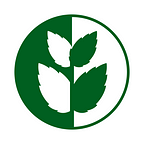The Estonian Farmland Market
Short History
Estonia did not escape the collectivisation of farms under Soviet rule.
The Perestroika initiated by Gorbatchev in the mid-80s reformed the agricultural market and in 1989, the government enabled private farmers to set up their own farms.
The independence of Estonia in 1991 gave farmers the chance to own their land, and the number of private farms quickly increased.
Today, farming account for 3% of workforce employment and roughly 1.7% of the total GDP.
How Much Land Is There
Estonia’s size is 4.522 million hectares (45 520 km2).
The country utilizes almost 25% of its area for agriculture, exactly 986 050 hectares of land.
Among these, 226 605 hectares are farmed organically, which makes Estonia one of the countries with the highest share of organic farming in Europe.
What Does Estonia Grow?
Estonia grows cereals, potatoes, and vegetables worth €1 129 163 per year.
The types of cereals Estonia grows are:
- Wheat
- Rye
- Barley
- Oats
- Triticale
- Buckwheat
- Beans
- Rapeseed
- Linseed
- Corn
Evolution of Prices
Estonia began measuring its range of economic indicators such as the CPI or the inflation rate in the 1990s after the stabilization of its economy.
The reform of the Estonian economy to transform it into a capitalist system has enabled considerable economic growth which was accompanied by considerable price increases.
Taking the CPI index at 100 in 1997, the same index is now worth…281 as of September 2022.
This has been reflected in farmland prices.
One hectare of agricultural land in Estonia cost approximately €600 in 2009.
Today, average prices stand between €7000 and €9000.
As we can see, farmland prices have increased much faster than the rest of the prices in the economy.
This is due to several factors.
On one hand, Estonian agriculture considerably improved its productivity.
On the other, the formidable economic development of Estonia has also increased prices in general.
The Future of Estonian Farmland
Estonian farmland price has increased by approximately 12% per year from 2011 to 2021 (with a sharp increase in 2022 due to the war in Ukraine on one hand, and inflation on the other).
It is set to keep on increasing as new farming techniques enable Estonian farmers to grow more on one hand, and as Estonia is becoming more expensive on the other.
Risk
There are several risks investors should take into account when investing in farmland.
- Water availability
- Pollution
- Weather events
- Rising sea levels
Luckily, Estonia is one of the safest places to invest in farmland as none of these risks apply to Estonia.
Conclusion
Estonia is a safe and reliable market for farmland investment.
Farmland prices are set to keep on increasing further as Estonia develops its economy and as Estonian farmers improve land productivity.
Ready to start your farmland investment journey? Go to landex.ai, and invest in farmland from €10.
The content of LandEx’s blog is for informational purposes only, you should not construe any such information or other material as investment, financial, or other advice. Nothing contained on the LandEx Medium blog constitutes a solicitation, recommendation, endorsement, or offer by LandEx or any third-party service provider to buy or sell any financial instruments in this or in any other jurisdiction in which such solicitation or offer would be unlawful under the securities laws of such jurisdiction.
Sources:
- https://andmebaas.stat.ee/Index.aspx?DataSetCode=PM59
- https://ec.europa.eu/eurostat/web/agriculture/data/database
- https://en.wikipedia.org/wiki/Agriculture_in_Estonia
- http://www.estonica.org/en/Economy/General_overview_of_Estonian_economy/Agriculture_and_forestry/
- https://www.stat.ee/en/find-statistics/statistics-theme/finance/prices/consumer-price-index
